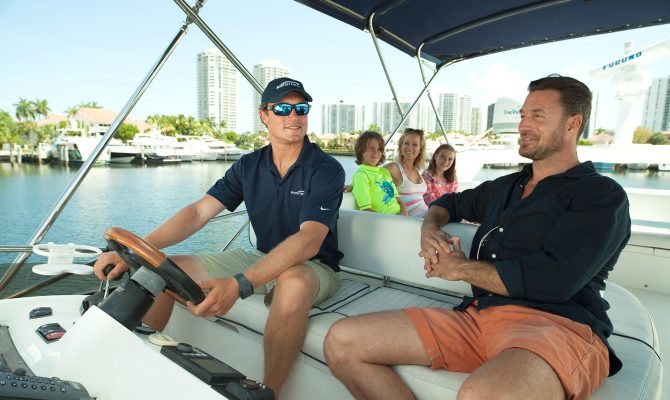The charter client has an advantage in that most charter companies are responsible outfits that will go far in ensuring a competent rep familiarizes said client with the boat, and that it has been rendered shipshape and properly outfitted.
But it’s the client, now skipper, who is in charge when that helpful rep waves “ciao” and casts you off. The more familiar you are with the vessel before that final line is tossed, the less the separation anxiety and the less stressful the charter.
Common Concerns
So, what’s the most common “ruin your day” with any diesel vessel, be it charter, auxiliary sail or commercial? Filters! Therefore, whether I’m moving a diesel-powered boat, the first thing I do is replace them. As a charter client, that’s not your job, but the question, “how many hours since the filters were changed and are they within the manufacturer’s recommended range including the hours I’m expecting to be underway,” is well within your purview to ask and should be answered reassuringly by the rep.
When you start your charter, you expect the fuel to be topped off. In some vessels with large capacity, however, you may be told “there’s more than enough for your needs.” And I’m sure that’s true. But for many reasons — including slosh, slosh and who knows what’s lurking in the bottom of those tanks — I like to leave the dock with full tanks. On that note, some older boats have crossover valves that must be manually set when switching tanks. That’s a good thing to know. It’s bad enough to run out of fuel; it’s worse when a full tank goes untapped.
Of course, before getting underway, we must be familiar with the vessel’s systems. This should be more than a cursory explanation by the rep. When the air-conditioning goes down, you should be able to go to the vessel’s systems log, which is on board and was referred to during the walk-through, and determine if the problem has a simple fix. (Where exactly is that breaker?)
The responsible rep will also sit down with you and the boat’s charts and electronics until you both feel that you’re familiar with the area you’ll be cruising and the navigational, tide/current and bottom/anchoring characteristics. If anchoring is in the picture, especially if there’s a windlass involved, I’d suggest that before that first drop off an idyllic cove (or a nasty lee shore) you get the hook up and down once or twice at the dock.
Dock Driving
Before casting off, I always “dock drive” the vessel. With the boat secured to the dock — fendered as need and with all its lines, springs, etc. in place — I’ll put the engine(s) through their paces. I’ll slowly run the RPMs up, one engine at a time, and see how the boat reacts. Shifting, I want to see how each engine slips into gear forward and reverse; is one indent smoother than the other? Does the vessel tend to “jack-rabbit” (jump) ahead or astern when engaged? Single-screw vessels, depending on the prop rotation, will always favor port or starboard coming ahead or astern. Twins usually have a somewhat “dominant” engine; something good to know when you’re maneuvering.
Regarding the engines, or more specifically the engine room, it’s not a good idea to go into “rental car mode” with your charter vessel. (When was the last time you popped the hood on a rental?) Every time I fire up, I put on my ear protectors and visit the engine room. The charter skipper should do that also; a quick eyeballing and sniff — you’ll never miss the smell of burnt wires and overheated coolant — could save your vacation.
Shoot a few landings with the rep aboard. These folks are excellent boat handlers, and most are happy to share what they know. You’ll learn a lot from them.
One last bit of advice from one who cut his eyeteeth shepherding charter clients in Tortola and St. Thomas: Keep an open mind, and ask and ask again if you’re not sure of something during the checkout. You’re about to undergo a new adventure and, almost invariably, it will be a fun-filled and memorable experience. Enjoy it to the utmost.
[author] [author_info]Stuart Reininger is a regular contributor to HeartLand Boating magazine. [/author_info] [/author]




